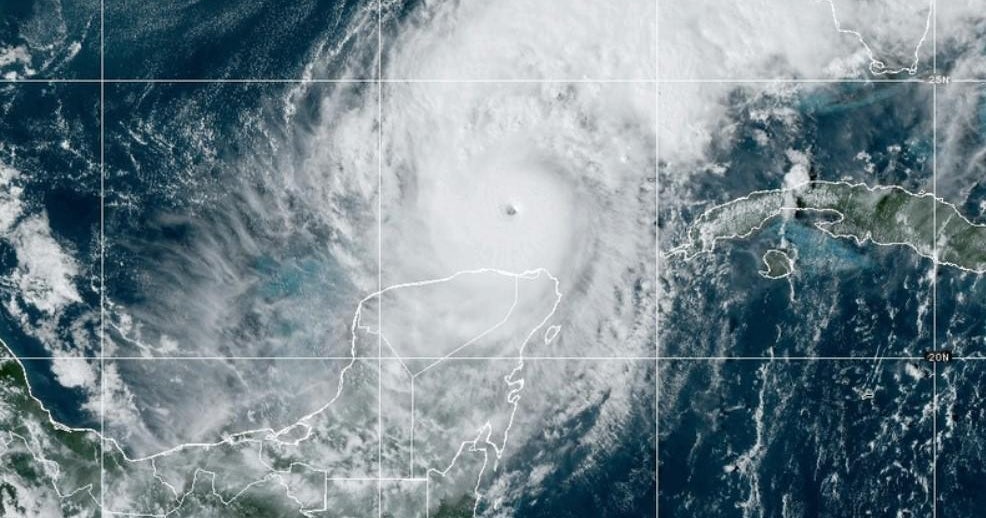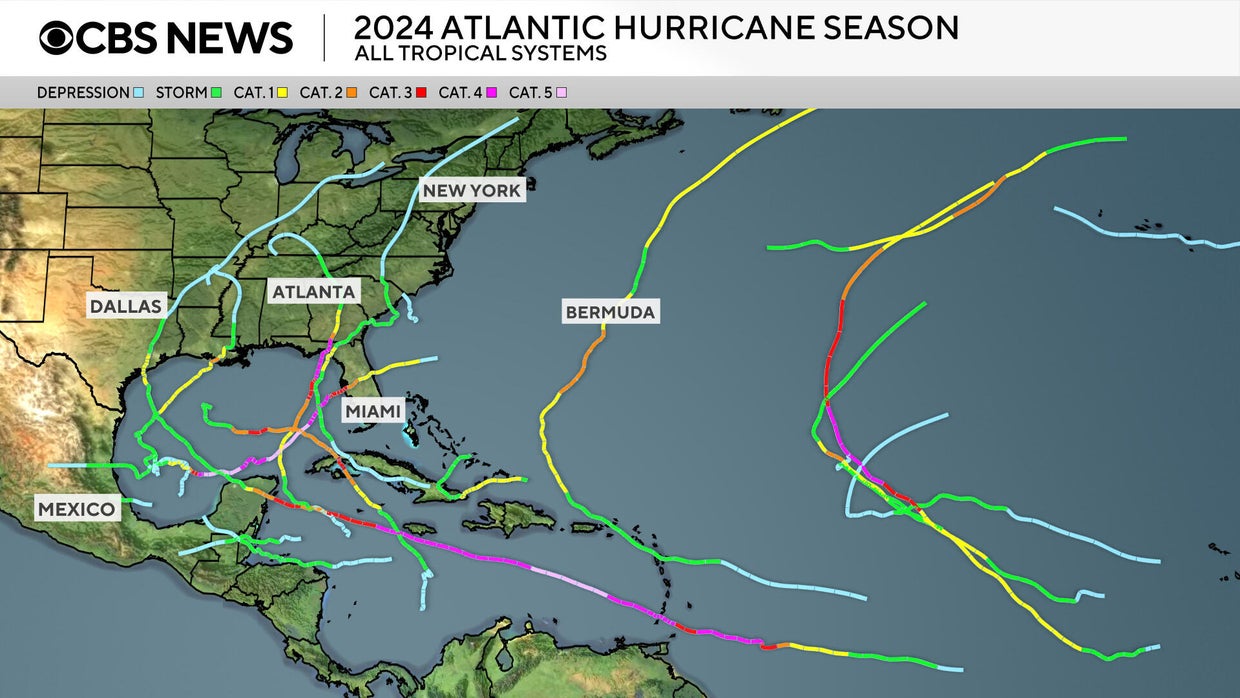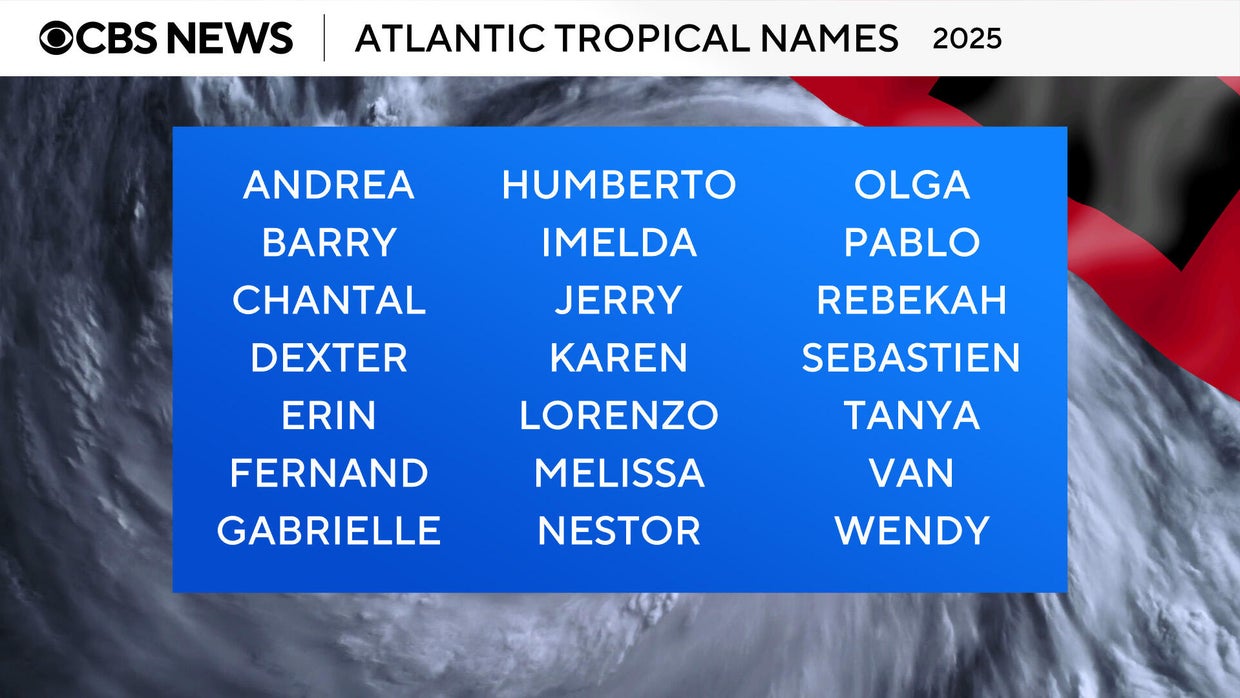
2025 Atlantic hurricane season will be above average, researchers predict
3. April 2025
Researchers are predicting an above-average Atlantic hurricane season in 2025, likely producing stronger and more frequent storms than a typical year but at the same time with less intensity expected than last season. The annual prediction is closely watched in Florida and other coastal states at risk when hurricane season officially starts June 1.
Experts at Colorado State University’s Tropical Cyclones, Radar, Atmospheric Modeling and Software team estimate that nine hurricanes will occur over the course of the upcoming season, with 17 named storms overall.
Four of the hurricanes are predicted to be major — meaning a Category 3, 4 or 5 on the Saffir-Simpson scale. Category 3 hurricanes are those with sustained winds that reach 111 to 129 miles per hour, enough to cause devastating damage. Category 4 hurricanes have sustained winds of 130 to 156 mph, and the most catastrophic Category 5 storms reach 157 mph or higher.
Hurricane activity this year is expected to be roughly 125% higher than the 1991-2020 season average, according to the report. One of its authors, Levi Silvers, told CBS News that jump is significant, albeit slightly lower than the 2024 activity prediction, which was 130% higher than the 19-year average.
“It’s a noticeable and important difference, because it matters for people along the coastlines whenever we have an above average season,” Silvers said. “But I think what’s really important to understand here is that the amount of hurricanes that are occurring in the Atlantic and in the Gulf fluctuates a lot from decade to decade. As long as we’ve been paying attention to hurricanes, we’ve noticed that they fluctuate a lot from year to year.”
Warm sea surface temperatures were the primary driver for this year’s above-average hurricane forecast. That was also the case in 2024, when Silvers said the measurement was “off the charts.”
“It was super warm, warmer than we’ve really seen before,” he told CBS News, adding that, this year, “they’re still warmer than normal, but the temperatures have come down since last time. So that’s one of the main factors, why we’re forecasting less [activity] than last year, but it’s still above average.”
The researchers’ prediction recognizes that “considerable uncertainty” still exists as to the phase of the El Niño-Southern Oscillation, or ENSO, cycle. El Niño is the warmer half of the cycle, an alternating pattern of contrasting climate shifts defined by sea surface temperatures and precipitation in a block of the equatorial Pacific that depart from the neutral norm. La Niña, the inverse of El Niño, is the colder phase of ENSO.
Weak La Niña conditions are currently present in that part of the tropical Pacific, but the CSU researchers said they anticipate those will transition to neutral conditions over the next couple of months. The likely absence of El Niño, which often is associated with conditions that disfavor hurricane activity, could mean the coming season is more conducive to hurricanes.
“We usually flip between El Niño and La Niña, and we think that later in the season, it’s going to be kind of neutral between the two of those,” said Silvers. “But we don’t know for sure. That’s actually one of the sources of uncertainty in our forecast. Trying to figure out if it’s going to be a neutral state, or El Niño or La Niña is part of the challenge.”
Atlantic hurricane season happens annually in North America, beginning June 1 and ending November 30. According to the National Oceanic and Atmospheric Administration, scientists have pinpointed that timeframe as the window where hurricane activity peaks in the Atlantic Ocean.
Both Colorado State University and NOAA, the federal agency responsible for weather forecasts, release predictions each year before the season gets going. Usually their estimates more or less align.
Referencing recent budget and staff cuts at the federal agency, Silvers told CBS News that NOAA’s data is integral to the university’s research.
“A lot of what we do with this forecast is really fundamentally dependent on the observations that NOAA collects all around the globe, but especially in the oceans,” he said. “And so it really would be pretty much impossible to get a good forecast for future hurricane seasons without NOAA’s observational network.”


